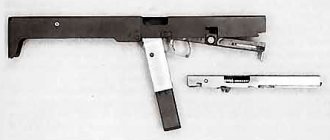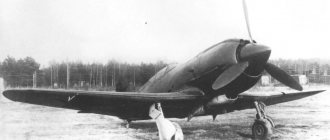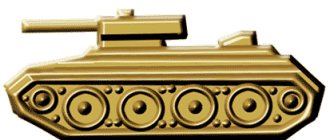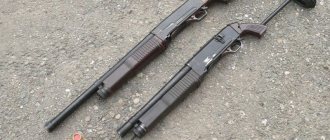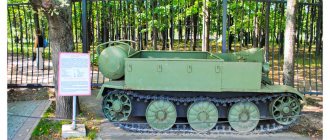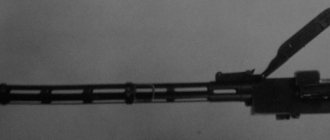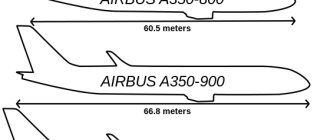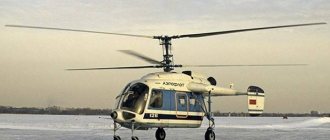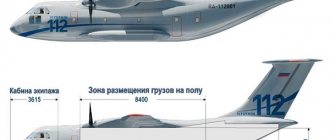Production of body armor
The purpose of a bulletproof vest is to protect the human body (namely the upper part of the body - the torso).
Thanks to the high-strength materials from which it is made, it is able to keep intact the most vital organs located in the abdominal cavity and chest. Typically, such a protective device consists of materials that have conservation qualities - protection from bullets and shrapnel, as well as dissipation of their energy. The materials that are most often used to create body armor include: Kevlar, aramid, steel, titanium, and ceramic plates. For Russian companies that produce body armor, the most typical use of ballistic fabric such as Kevlar.
Body armor is sewn from 30-50 layers of ballistic fabric and batting (for the damper cushion), and all details without exception are stitched with reinforced threads. The final stage of creating a suit consists of inserting armor elements (plates made of titanium, steel or ceramics) into pre-prepared pockets.
The more layers a vest is made of, the more reliably it protects a person, however, in proportion to this, the ability to move quickly is lost due to the increasing weight of the product. Therefore, manufacturers are trying to find a middle ground.
It is worth distinguishing a bulletproof vest from an armored suit (used for special purposes by sappers, for example).
Basic principles for choosing a bulletproof vest
A concealed body armor vest can be disguised as a regular jacket.
It is invisible to others, easy to move in, and can be worn for a long time without much discomfort. But it will only serve as a barrier against being hit by a knife or a small-caliber bullet - all such models have a low protection class. But, if the task is not to protect yourself from a killer’s bullet with a sniper rifle, such a means of protection will be quite sufficient. A bulletproof vest of the highest, sixth class of protection will protect the body from a 7.62 mm bullet with a heat-strengthened steel core fired from a rifle. But it will also weigh more than 10 kg - wearing it will require training and endurance. If a businessman just needs to play it safe, such a model will be of no use.
Therefore, before buying a bulletproof vest, you need to clearly determine what type of weapon it should protect against, how often and for how long it will have to be worn, and whether it should be hidden from view of prying eyes. After all, the category of body armor includes a variety of means of individual body armor, differing from each other in a number of characteristics.
What types of body armor are there?
According to the established standard, body armor is divided into three types: A, B and C. Type “A” is a fabric-based body armor (the so-called soft or flexible). Semi-rigid body armor, based on armored metal plates, belongs to type “B”. And type “B” is a highly protective body armor (based on rigid plates made of special armored metal).
The classification in Russia includes 10 classes of body armor: 0, 1, 2, 2a, 3, 4, 5, 5a, 6, 6a. Each of the classes assumes a certain level of protection against firearms and bladed weapons and means operation at different levels of threat (for example, class 0 is protection against bladed weapons). Thus, a flexible body armor of type “A” is unlikely to protect the body from bullets that can penetrate even its base, but it will protect against the penetration of bladed weapons. Today there are a large number of models of body armor from various manufacturers.
History[ | ]
The European large-plate plate armor that had developed by the 16th century provided partial protection against firearms of that time. High-quality cuirasses of the 17th century were guaranteed not to be penetrated by a pistol (a pistol shot at point-blank range was often used during acceptance to test the protective properties of armor) and not always by light arquebus guns, being vulnerable only to a heavy musket. However, the technology of that time did not allow mass production of armor of this quality. Mass-produced armor, especially infantry armor, protected much worse from bullets. Due to this, and also in connection with the transition from a civilian army to a recruit army, by the beginning of the 18th century, armor in the armies of European states almost completely disappeared, remaining only on the equipment of heavy cavalry - cuirassiers, as well as in sapper units.
In feudal Japan, bulletproof armor "Namban-gusoku" appeared after the development of contacts with Europeans, in the middle of the 16th century and (since each armor was the property of the samurai and passed from father to son) was used a little longer.
Regarding the bullet resistance of the cuirass in the literature of the 1820s. The following data is provided. An ordinary iron cuirass from the time of the Napoleonic Wars could be penetrated from a gun at any distance less than 75 fathoms, and from a pistol - less than 18 fathoms. A steel cuirass “made of forged German steel” penetrated from a gun only from 54 fathoms, and from a pistol from 9 fathoms only half of the bullets penetrated and did not penetrate from 18 fathoms. Intended for sappers, a heavy cuirass made of one front plate (breastplate), “forged from iron together with steel,” thicker than ordinary steel, did not penetrate even from 9 fathoms, although after 18 fathoms a rifle bullet made a noticeable dent in it. At the same time, a rifle bullet fired from the same 18 fathoms pierced through four ordinary iron cuirasses placed one after another, after which it went deeper into the wooden board located behind them to its diameter, or two steel ones, and made a depression in the third [1].
Thus, the protective properties of armor strongly depended on its quality, and, therefore, cost: high-quality armor made of hardened steel had quite decent bullet resistance, which could not be said at all about mass products, which conditionally protected only from pistol bullets or random rifle bullets. departure of their trajectory.
In the Russian Empire, cuirasses were introduced in 1731[2], in 1914 they remained in service with four Guards Cuirassier regiments (after the outbreak of the First World War, united into the Guards Cuirassier Division, which was sent to the North-Western Front)[3].
In France, the last example of a cuirass mod. 1883 remained in service with the cuirassiers until the winter of 1914-1915, when the cuirassier regiments were converted into infantry.
1890s - 1940s[ | ]
Test of body armor (Washington, September 1923) German Infanterie-Panzer cuirass 1917, World War I.
Japanese police in bulletproof vests (July 1931) Concealed bulletproof vests, assembled from steel plates, appeared by the early 1890s (in March 1891, there was an attempt on the life of Bulgarian Prime Minister S. Stambolov, who survived thanks to wearing a bulletproof vest that stopped revolver shots bullets). After the assassination of US President William McKinley in September 1901, the possibility of creating means of protection against firearms was considered at a meeting of the US Congress.
In 1905, captain of the engineering troops A. A. Chemerzin introduced a 5-pound metal shell, which protected from shots from a government-issue Nagan revolver, Parabellum and Browning pistols from a distance of 5 steps. “Shells” in the amount of 1300 pieces. were supplied to the police of Moscow and St. Petersburg[4].
In 1907, a more advanced shell made of “wire felt” (densely compressed thin steel wire) was proposed by Colonel V.F. Galle; the design included a shock-absorbing cotton lining, but the weight of the product was 19 - 21 pounds. The Galle shell passed tests and was allowed to be purchased by police officers at their own expense, but was not supplied for supply[5].
During the First World War, several versions of metal cuirasses, breastplates and armor were developed to protect infantrymen, but they were not widely used - they either did not provide a sufficient level of protection or were too bulky and heavy[6]:
- The English vest "Dayfield Day Shield' Body Armor"
, modeled after a medieval brigantine, was comfortable to wear, but provided only protection from shrapnel. - German bib Sappenpanzer
mod. 1916 weighed 10.3 kg, but stopped a rifle bullet fired from a distance of at least 500 meters. - “Brewster Body Shield”
set , which consisted of a solid helmet and cuirass, weighed 18 kg, but stopped rifle bullets that hit the torso or head. At the same time, there was no protection at the back.[6]
Developed at the end of the war, the British Chemico body shield
had a protective cover made of khaki fabric, which made the infantryman in protective equipment less noticeable on the ground [6].
In the 1920s and 1930s in the United States, there were cases of manufacturing low-tech “body armor” from metal plates and several layers of dense woolen fabric. Such vests provided protection against low-velocity pistol bullets[7].
During the Second World War, attempts were again made to improve the protection of military personnel: in addition to experimental samples, a bulletproof steel breastplate was created in the USSR for personnel of assault engineering brigades [8][9].
- On July 1, 1940, the People's Commissariat of Defense of the USSR received the invention of P. I. Maksimov - “armored clothing” (which was a vest made up of several horizontal rows of steel plates sized from 10 to 15 cm fastened together on a soft fabric base, worn over the uniform) , which was proposed by him as a replacement for steel breastplates[10]
In 1942, protective anti-fragmentation vests for bomber crews were supplied to the US and British Air Forces ( M1 Flyers Vest
) (
"flak vest"
) [11], several versions of metal protective armor were used by Japanese army soldiers.
1950s - 1980s[ | ]
The beginning of the widespread use of anti-fragmentation vests dates back to the period of the Korean War (1951-1953). Studies conducted by the US Department of Defense showed that up to 70 percent of all injuries occurred in the area from the neck to the groin, and in most cases the damaging elements are light (and most massive) fragments of mines, shells, grenades and aircraft bombs, which have relatively little kinetic energy [12]. In the USA, they came to the conclusion that it is possible to significantly reduce losses by equipping personnel with body armor, the protective elements of which are textile (fabric) made from a number of layers (12 - 18) of synthetic high-strength fabric - polyamide, in the USA nylon (" nylon T-728
»)[13].
Weight of one of the first standard US Marine Corps vests ( M1951 USMC Armored Vest)
), produced in the amount of 31 thousand pieces, was 3.51 kg.
The protective part of the M1951 is made of multi-layer nylon fabric (fabric bags), the vest could be reinforced with several aluminum or fiberglass insert plates. The next version ( M1952
) was made of 12 layers of ballistic nylon in a waterproof vinyl fabric case, its weight was 3.6 kg.
The spread of body armor in the US armed forces dates back to the Vietnam War of 1964-1973 - in 1955 the M-1955
, however, the standard vest at this time becomes the anti-fragmentation nylon vest
M-69 Fragmentation Protective Body Armor
weighing 3.85 kg.
At the same time, work was underway in the United States to create elements of protective equipment for helicopter crews, since up to 80 percent of helicopters and light aircraft shot down over South Vietnam were shot down by small arms fire. In 1966, a fundamentally new type of armor protection began to be supplied to the troops - ceramic-plastic combined armor for helicopter crews. The development of such armor and its rapid development by US industry was initiated by the DARPA organization. In 1967, such armor protection in the form of elements of local aircraft reservation and protective elements of the armored vehicle was supplied to combat units of the US Army Aviation stationed in South Vietnam[14].
In the USSR, one of the first post-war body armor for ground forces, on the instructions of the GRAU, 6B1
was developed in 1954 at the All-Union Institute of Aviation Materials (VIAM).
In 1957, the vest was accepted for supply to the armed forces, but did not go into mass production (about 1,500 pieces were produced in total)[15]. In 1978, at VNIIStal, a more advanced 6B2 vest was developed to meet other requirements of the GRAU. Armor plate of the Soviet body armor 6B2.
During the battle, one of the bullets pierced the armor plate, but the other, hitting at a high angle, was successfully stopped. The armor plate itself lost almost its entire safety margin during operation. In the USSR in the early 1970s (vest ZhZT-71
) and in the West, starting in the 1960s (“
Barrier Vest
” and a number of others in the USA and Europe), the first specialized body armor for law enforcement officers was developed.
In the early 1980s, the first general-arms body armor based on Kevlar (its Soviet analogue - TSVM-Dzh fabric) was created in the USA (PASGT armor protection kit) and the USSR (6B2, 6B3-01 and 6B4)[16].
In 1982, in the United States, concealed carry protective equipment was created that did not differ in appearance from ordinary clothing: a vest and jacket lined with several layers of Kevlar Eagle ballistic fabric, which provided protection against shots from a .38 caliber revolver[17].
1990s - 2000s[ | ]
A new stage in the development of body armor began in the 1990s.
The Gulf War (1991) initiated the development of modular personal protective equipment, which made it possible, based on standard elements of equipment, to form various standard configurations depending on the combat mission and purpose of the soldiers (specialty) [ source not specified 1252 days
].
Since the end of 1999, new bulletproof and anti-fragmentation vests (Interceptor) with protective inserts made of combined armor began to be supplied to the US Army and Marine Corps. For the first time, the US Armed Forces received standard mass-produced body armor with bulletproof protection for vital organs.
In 2006, the US Army command began research to create a new personal armor protection system ( Next Generation Body Armor System
), intended to replace OTV;
Since 2007, new MTV ( Modular Tactical Vest
) body armor has been supplied to the Marine Corps.
In 2007, the US Army received an improved IOTV body armor ( Improved OTV
) with an increased protection area.
In the post-Soviet space, by the beginning of the 1990s, the main type of body armor was the Soviet body armor of the “Beehive” series ( 6B4
and
6B5
) of the 1984-1985 model, but later the development of personal protective equipment stalled, and funding for many promising projects was curtailed.
In Russia, production and research in this area have become decentralized. However, in the 1990s, within the framework of the Barmitsa R&D program, new 6B11
,
6B12
,
6B13
,
6B17
and
6B18
. However, supplying the armed forces with new means of protection in the required volume was difficult for economic reasons. In 2003, to replace the 6B11, 6B12 and 6B17 vests, the 6B23 unified vest was accepted for supply.
Currently, the armed forces, internal troops and other law enforcement agencies of Russia are supplied with a fairly wide range of body armor for various purposes[18]. In addition, bulletproof and anti-fragmentation “body armor” for service dogs is produced.
Who is suitable for concealed body armor?
For those who do not want their protection to be known. There may be several reasons for this. Among them is a reluctance to disturb loved ones and show body armor to colleagues, business partners and generally everyone around. But the main goal is the same: the attacker should not know that his victim is wearing armor. In this case, he will almost certainly prefer to do the simplest thing and shoot him in the torso several times. If the attacker is aware of the defense, he will try to hit the head.
Most often, concealed body armor is used by businessmen, bodyguards, and people who transport expensive goods unofficially, not wanting to attract unnecessary attention to themselves. Less commonly, they are bought by private individuals - for example, football fans who fear attack amid sports disputes. Also, for example, they are provided to people undergoing the witness protection program.
Protection area
In the manufacture of Br1 and 2 class armor, soft materials that fit the body are used. Thanks to this, such body armor covers not only the stomach and back, but also the collarbones and sides. Their advantage is a large protection area. Br5 class models are made using composite ceramic panels. This is a rigid material, it does not fit the body, so such body armor only protects the back and chest. On average, their protection area is 2-2.5 times smaller than that of class 1-2 Br models. If an attack with a knife or a shot from a TT, Nagan, PM, or Stechkin automatic pistol is most likely, you need to choose the Br2 body armor. In such a situation, it will protect better than a Br5 class model - it will not only stop a bullet and a knife, but will also save if the attacker gets hit in the side or collarbone.
Class selection
The class of concealed body armor depends on what weapon the attacker can use.
If we are talking about a quarrel with a group of guys at the entrance or with an aggressive neighbor, it is unlikely that you will have to defend yourself from a more serious weapon than a traumatic pistol. In this case, a Br1 class bulletproof vest will be sufficient.
If protection is needed by a businessman who has an unpleasant situation with business partners, especially if it comes to direct threats and messages about an impending assassination attempt, light armor will not be enough. In this case, you need to analyze the situation and choose the appropriate option:
- Br2. It is capable of protecting against a shot from a TT pistol - and therefore saving a life in a common variant of an assassination attempt, when a killer attacks a person in the entrance, shoots several times in the torso and quickly disappears.
- Br3. It will save you from bullets from a Yarygin pistol with a bare steel core, as well as from AK-74 and AKM bullets with a non-heat-strengthened steel core. They mainly use collection services.
- Br4. Will stop a bullet with a heat-strengthened core from an AKM or AK-74 assault rifle. The weapons that such armor protects against are rarely used in Russia. But if the threat comes from a military man or a criminal authority, it is better to choose body armor of this particular protection class.
- Br5. Relevant if there is fear or accurate information that the killer will shoot from a sniper rifle. Such a weapon is rarely used - it is difficult to move around the city with it, it is not easy to hit the target with it, and besides, the attacker will have to choose the right place to shoot, and this is also quite difficult to do. That is why Br5 body armor is used in exceptional cases.
The higher the class, the greater the threats that can be avoided. But does this mean that the best option is to buy a Br5 body armor vest and wear it to protect yourself from any weapon? No. Because in addition to the protection class, there are other factors that need to be taken into account.
